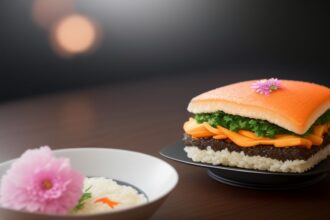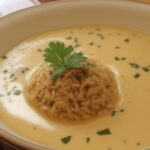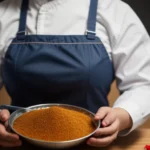Mastering the Basics of Japanese Cooking: A Beginner’s Guide to Classic Recipes and Techniques
Japanese cuisine is widely admired for its delicate flavors, fresh ingredients, and artful presentation. From sushi and sashimi to ramen and tempura, Japanese cooking offers a rich and diverse culinary experience that is both rewarding and satisfying. If you are a beginner looking to explore the world of Japanese cooking, mastering the basics is essential to creating authentic and delicious dishes. In this beginner’s guide, we will introduce you to some classic Japanese recipes and techniques that will help you on your journey to becoming a skilled Japanese home chef.
1. Understanding the Core Ingredients
Japanese cuisine is known for its use of fresh and seasonal ingredients. Some of the core ingredients in Japanese cooking include rice, soy sauce, miso, mirin, sake, dashi (a Japanese stock), nori (seaweed), and tofu. These ingredients form the foundation of most Japanese dishes and are essential for creating authentic flavors.
2. Mastering the Art of Rice
Rice is a staple in Japanese cuisine and is often served with almost every meal. To cook perfect Japanese rice, it is important to wash the rice thoroughly to remove excess starch. Using a rice cooker is the easiest way to prepare fluffy and perfectly cooked rice, but you can also make it on the stovetop. The key is to let the rice rest after cooking to allow the steam to redistribute evenly.
3. Perfecting Sushi Rice
Sushi rice is a special type of rice that is seasoned with vinegar, sugar, and salt. It is the base of all types of sushi and is essential for making sushi rolls, nigiri, and sashimi. To make sushi rice, cook the rice as you would regular rice and then season it with a mixture of rice vinegar, sugar, and salt. Mix the seasoning into the rice while it is still warm and allow it to cool before using it for sushi.
4. Making Authentic Miso Soup
Miso soup is a traditional Japanese soup made with fermented soybean paste called miso. It is often served as a starter or side dish in Japanese meals. To make miso soup, simply dissolve miso paste in hot dashi stock and add ingredients such as tofu, wakame seaweed, and green onions. Miso soup is a comforting and nourishing dish that is easy to make at home.
5. Exploring Japanese Noodles
Noodles are a popular staple in Japanese cuisine and come in a variety of shapes and sizes. Some of the most common types of Japanese noodles include ramen, udon, and soba. Each type of noodle has a unique texture and flavor profile, making them versatile ingredients for a wide range of dishes. Experiment with different types of noodles to discover your favorite!
6. Mastering the Art of Tempura
Tempura is a popular Japanese dish consisting of battered and deep-fried seafood and vegetables. To make tempura, coat ingredients such as shrimp, fish, and vegetables in a light and crispy batter made of flour, cornstarch, and cold water. Fry the ingredients in hot oil until they are golden brown and crispy. Serve tempura with a dipping sauce made of soy sauce, mirin, and grated daikon radish.
7. Creating Delicious Teriyaki Dishes
Teriyaki is a classic Japanese cooking technique that involves grilling or broiling meat or fish with a sweet and savory glaze made of soy sauce, sugar, and mirin. Teriyaki dishes are flavorful and delicious, with a perfect balance of umami and sweetness. Experiment with different proteins such as chicken, salmon, or tofu to create your own teriyaki masterpieces.
8. Mastering the Basics of Sushi Rolling
Sushi rolling is a skill that takes practice to master, but with time and patience, you can create perfectly rolled sushi at home. To make sushi rolls, start by spreading sushi rice on a sheet of nori, then add your favorite fillings such as fish, vegetables, or avocado. Roll the sushi using a bamboo mat and slice it into bite-sized pieces. Serve the sushi with soy sauce, wasabi, and pickled ginger for a classic Japanese meal.

9. Exploring the World of Nigiri and Sashimi
Nigiri and sashimi are two classic Japanese dishes that showcase the beauty of fresh seafood. Nigiri is a type of sushi that consists of a slice of raw fish or seafood on a bed of seasoned rice, while sashimi is thinly sliced raw fish served without rice. Both nigiri and sashimi require high-quality ingredients and precise knife skills to create elegant and delicious dishes.
10. Mastering the Art of Bento Boxes
Bento boxes are a popular lunch option in Japan that feature a selection of small and colorful dishes arranged neatly in a box. A typical bento box includes rice, protein, vegetables, and pickles, all artfully arranged to create a visually appealing meal. Experiment with different combinations of foods to create your own custom bento box and enjoy a taste of Japan on the go.
11. Exploring Traditional Japanese Desserts
Japanese desserts are known for their delicate flavors and elegant presentations. Some popular Japanese desserts include mochi (a chewy rice cake), dorayaki (sweet red bean pancakes), and matcha (green tea) flavored sweets. Try your hand at making traditional Japanese desserts to complete your Japanese culinary experience.
12. Incorporating Japanese Cooking Techniques
Japanese cooking techniques such as steaming, grilling, and simmering are essential for creating authentic Japanese dishes. Steaming is a gentle cooking method that preserves the nutrients and flavors of ingredients, while grilling imparts a smoky and charred flavor. Simmering is used to gently cook proteins and vegetables in a flavorful broth, creating tender and delicious dishes.
13. Experimenting with Japanese Seasonings and Condiments
Japanese cuisine is known for its use of a variety of seasonings and condiments that add depth and complexity to dishes. Some common Japanese seasonings and condiments include soy sauce, mirin, sake, sesame oil, miso paste, and pickled vegetables. Experiment with different flavors and textures to enhance your dishes and create unique and memorable meals.
14. Embracing the Japanese Culinary Philosophy
Japanese culinary philosophy emphasizes simplicity, balance, and harmony in food. Try to source fresh and high-quality ingredients, cook with precision and care, and present your dishes beautifully to capture the essence of Japanese cooking. Embrace the principles of wabi-sabi, which celebrates imperfection and simplicity, to create authentic and soulful dishes that nourish both the body and spirit.
15. Continuing Your Japanese Cooking Journey
Mastering the basics of Japanese cooking is a rewarding and fulfilling experience that will open up a world of flavors and techniques. As you continue to explore the world of Japanese cuisine, don’t be afraid to experiment, make mistakes, and learn from your experiences. With practice and dedication, you will become a skilled home chef capable of creating delicious and authentic Japanese dishes that will delight your family and friends. Enjoy your culinary journey and savor the flavors of Japan!
FAQs about “Mastering the Basics of Japanese Cooking: A Beginner’s Guide to Classic Recipes and Techniques”
- Why should beginners in cooking consider “Mastering the Basics of Japanese Cooking” as their go-to guide? This book serves as an excellent introduction to Japanese cuisine, offering beginners a comprehensive guide to classic recipes and essential techniques, making Japanese cooking accessible and enjoyable.
- What classic Japanese recipes and techniques are covered in this beginner’s guide? “Mastering the Basics of Japanese Cooking” covers a range of classic Japanese recipes such as sushi, tempura, miso soup, teriyaki, and more, along with essential techniques like sushi rice preparation, knife skills, and dashi broth making.
- How does this book simplify Japanese cooking for beginners? This book simplifies Japanese cooking for beginners by breaking down complex recipes and techniques into easy-to-follow steps, providing clear instructions, helpful tips, and illustrative photos to guide novice cooks through each recipe.
- Are there specific chapters or sections dedicated to explaining key ingredients and equipment used in Japanese cooking? Yes, this book includes dedicated chapters or sections that explain key ingredients such as soy sauce, mirin, and sake, as well as essential equipment like rice cookers, sushi mats, and Japanese knives, ensuring beginners have a solid understanding of Japanese culinary essentials.
- Can readers expect to find practical advice for incorporating Japanese cooking into their everyday meals from this book? Absolutely! “Mastering the Basics of Japanese Cooking” offers practical advice for incorporating Japanese cooking into everyday meals, providing meal planning tips, recipe variations, and suggestions for adapting Japanese flavors to suit different dietary preferences and occasions.
Advantages:
- Educational Value: “Mastering the Basics of Japanese Cooking: A Beginner’s Guide to Classic Recipes and Techniques” offers beginners valuable insights into Japanese culinary traditions, teaching them fundamental cooking techniques and providing them with essential recipes to start their Japanese cooking journey.
- Comprehensive Approach: The title promises to cover the basics of Japanese cooking, including classic recipes and techniques, offering readers a comprehensive introduction to the fundamentals of Japanese cuisine.
- Practical Guidance: As a beginner’s guide, the title serves a practical purpose for readers new to Japanese cooking, providing them with step-by-step instructions, cooking tips, and recipe ideas to help them develop their skills and confidence in the kitchen.
- Culinary Exploration: By introducing readers to classic Japanese recipes and techniques, the title encourages them to explore the depth and richness of Japanese gastronomy, fostering a deeper appreciation for Japanese flavors, ingredients, and cooking styles.
- Accessibility: The title caters to beginners, making Japanese cooking more accessible and approachable for readers who may be unfamiliar with Japanese cuisine or intimidated by its complexity, thereby encouraging them to try cooking Japanese dishes at home.
Disadvantages:
- Limited Scope: While the title focuses on mastering the basics of Japanese cooking, it may overlook more advanced or specialized techniques, potentially limiting the depth of the guide and excluding certain aspects of Japanese culinary traditions.
- Cultural Simplification: Focusing solely on classic recipes and techniques may oversimplify the complexity and diversity of Japanese cuisine, potentially overlooking regional variations, historical influences, or the nuances of Japanese cooking styles.
- Audience Limitation: The title may primarily appeal to beginners or novices interested in learning the basics of Japanese cooking, potentially excluding more experienced cooks or those seeking advanced techniques or specialized recipes.
- Subjectivity: The selection of “classic recipes and techniques” may be subjective and dependent on the author’s interpretation, potentially leading to differing opinions on what constitutes essential or fundamental aspects of Japanese cuisine.
- Lack of Cultural Context: While the title focuses on recipes and techniques, it may not provide sufficient cultural context or background information about Japanese culinary traditions, potentially overlooking the cultural significance and history of certain dishes or ingredients.
















